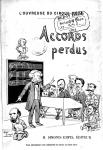
Emmanuel CHABRIER
1841 - 1894
Composer
Although highly appreciative of the arts, Chabrier only accepted his vocation as a composer fairly late in life. The son of a lawyer, he took his law exams in 1861 and shortly after obtained a post at the Ministry of the Interior. It was therefore as an enlightened amateur that he continued his music studies, tellingly avoiding any excessively institutionalised training. However, his many friends and acquaintances provide a key to his core personality. His friendships with Saint-Saëns, d’Indy and Massenet, and his close contact with Impressionist and Parnassian circles, show Chabrier to have been an open-minded man whose lively sense of humour masked a keen awareness of the advances being made in the arts. In 1889, he attended a performance of Tristan und Isolde in Bayreuth: it was after this revelation that he finally set his sights on a musical career. He had already tried his hand at composing, in particular with the opera L’Étoile (1877), but it was only during this period that he gradually achieved proper recognition, producing many works whose influence were to be felt into the mid-20th century. In many respects, his catalogue is typical of the freedom of approach he brought to the creative act. It showcases a subtle, sensitive style of writing, a remarkably intuitive sense of the orchestra and a desire to rise above the traditional rules of composition. Among his most significant works are España and the Joyeuse Marche for orchestra, the Bourrée fantasque for piano, and his operas Gwendoline and Le Roi malgré lui.
Documents and archives

Press illustration, Picture of a scene, Photograph
Maurice Renaud en Harald (Gwendoline de Chabrier)
Scientific publications
Publication












